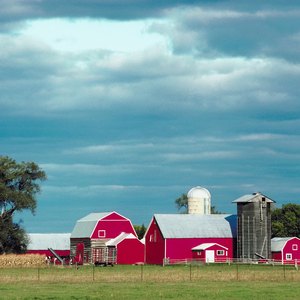
Pole barns are relatively inexpensive to build; nevertheless, they can increase the value of the property they're built on. The flexibility and durability of pole barns make them attractive alternatives to other forms of construction. Agricultural uses can include storage for hay or equipment as well as livestock housing. In many places, pole barns serve as garage and storage buildings.
Environmentally Friendly
You can get poles that provide the roof support for the barn from a recycled source. Purchase used poles from utility companies and cut them down to size for a pole barn. You'll use rough-cut lumber throughout the construction of the pole barn to keep the cost low; rough-cut wood is better for the environment than manufactured materials.
Capital Expense
Adding a pole barn to property increases its value, according to the Internal Revenue Service (IRS). The cost of building the pole barn is not deducted from income taxes until the property sells, when cost is deducted as a capital expense. The capital expense deduction can lower the profit made on the sale of the property and allow the property owner to pay less in capital gains tax.
Permits and Taxes
Anyone planning to build a pole barn will need to check local building codes and obtain permits before starting construction. Homeowner associations may have rules and regulations pertaining to construction within their jurisdictions. A pole barn may also increase the value of the property through property taxes. Be sure to check with your local property taxing authority for further information before constructing your pole barn.
Depreciation
In some cases, the cost of a pole barn may be depreciated over the life expectancy of the building if it is used for business purposes. For example, farmers may be able to depreciate the cost of building a pole barn if it is used for farming purposes such as equipment or seed storage.

